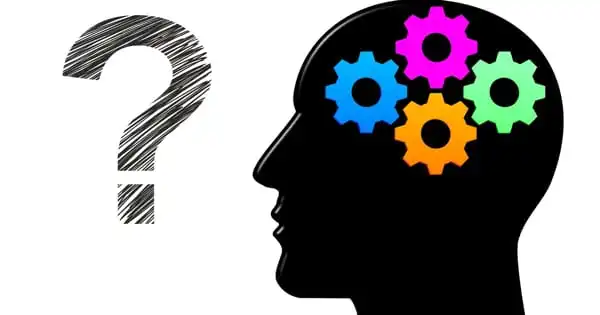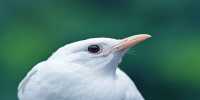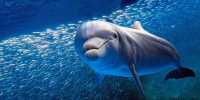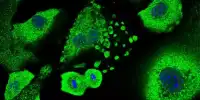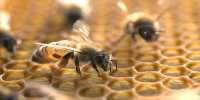The hippocampus is a brain area that is important for memory formation and appears to be involved in navigation. “Place” cells in the hippocampus respond specifically to being in specific locations, generating a cognitive map of the environment.
Scientists discovered the underlying workings of the hippocampal area of the brain as it organizes memories into temporal sequences using tests and a deep machine learning data processing approach. The findings could aid future research into cognitive illnesses like Alzheimer’s and other causes of dementia.
Researchers from the University of California, Irvine have revealed key mechanisms by which the hippocampal region of the brain organizes memories into sequences and how this might be used to anticipate future behavior in a scientific first. The discovery could be a vital first step in understanding memory failures in cognitive illnesses like Alzheimer’s and other forms of dementia.
The UCI researchers discovered evidence that the hippocampus network encodes and preserves progressions of events to aid in decision-making by combining electrophysiological recording techniques in rats with a statistical machine learning analysis of massive amounts of data. The work of the researchers was recently published in Nature Communications.
“When certain experiences or events occur, our brain keeps a pretty excellent record of them. This skill aids our daily functioning, but prior to this work, we didn’t have a comprehensive understanding of the neural mechanisms behind these activities” Norbert Fortin, associate professor of neurobiology and behavior at UCI, is the corresponding author. “Where it all comes together is that this form of memory is severely compromised in a variety of neurological illnesses or simply with aging, so we really need to understand how this brain function works.”
We discovered that we could consider these brain patterns as images, which enabled us to use deep machine learning approaches. We used a convolutional neural network to evaluate the data, which is a technique commonly used in image processing applications such as facial recognition.
Norbert Fortin
The study, which lasted more than three years, included experimental and data analytic phases. The researchers observed the firing of neurons in the brains of rats while they performed a series of odor recognition tests. The scientists were able to evaluate the animals’ recollection of the correct sequence and detect how their brains captured these sequential associations by delivering five different odors in varied sequences.
“The analogue that comes to mind is computing,” Fortin added. “If I were to insert electrodes into your brain – which we can’t, which is why we use rats – I would be able to observe which cells are firing and which aren’t at any given time. This gives us a better understanding of how the brain represents and computes information. It’s as if we’re looking at zeros and ones in a computer when we capture activity patterns in a structure.”
Neuronal activity and inactivity data, obtained in millisecond intervals over several minutes, provide a dynamic picture of the brain’s functioning. Fortin claimed that he and his colleagues were able to “read the minds” of their subjects in some ways by viewing the “coding” of the cells in rapid succession — which ones were firing and which were not.
“Things move swiftly when you’re thinking about them,” he added. “You’re not going to be fixated on that memory for long. It is now represented, but we can see how quickly it can change.”
Fortin realized early on that scans of hippocampus activity would generate massive amounts of raw data. He engaged the help of statisticians at the Donald Bren School of Information & Computer Sciences from the outset of the project.
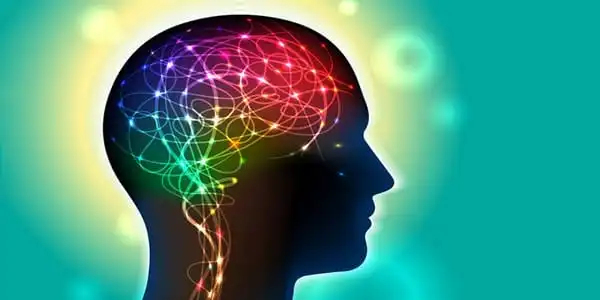
“The neuroscience problems we had in my lab at the time were far too sophisticated for the statistical knowledge we had,” Fortin explained. “That’s why we needed to enlist collaborators with data science skills.”
“Because of the complexity of their data, many burgeoning neuroscience investigations rely on data science methodologies,” said senior co-author Babak Shahbaba, a UCI Chancellor’s Fellow and professor of statistics. “Brain activity is captured at the millisecond level, and these trials last more than an hour, so you can understand how quickly the amount of data accumulates. It reaches a point where neuroscientists require more advanced procedures to achieve what they had envisioned but were unable to implement.”
He pointed out that as neurons encode information, such as memories, scientists can gain insight into the process by evaluating the pattern of spiking activity across all recorded neurons, known as an ensemble.
“We discovered that we could consider these brain patterns as images, which enabled us to use deep machine learning approaches,” Shahbaba explained. “We used a convolutional neural network to evaluate the data, which is a technique commonly used in image processing applications such as facial recognition.”
The researchers were able to decode the firing of neurons to obtain information in this manner.
“We know what the signature for odor B looks like, just like we know what the signatures for A, C, and D look like,” Fortin explained. “As a result, you can see when those characteristics emerge at a different point in time, such as when our patients are anticipating something that hasn’t happened yet. We’re seeing these signatures swiftly replayed as they consider the future.”
The tools and approaches established during this effort, according to Shahbaba, can be used to a wide range of challenges, and Fortin may expand his line of inquiry into additional brain regions.
The study exemplifies the value of convergence research at schools such as UCI. According to Shahbaba: “I could see the difference it was creating for our students. Researchers in Norbert’s neuroscience group are taking data science classes and can now pose some really critical scientific questions that they couldn’t before, and my own students are thinking fundamentally about the scientific process in unprecedented ways.”
“Through this relationship, we are training the next generation of scientists with the necessary abilities to do multidisciplinary research,” he added.
